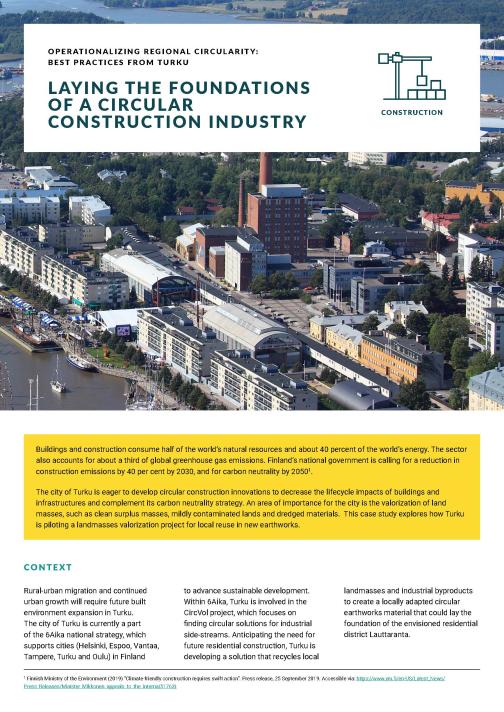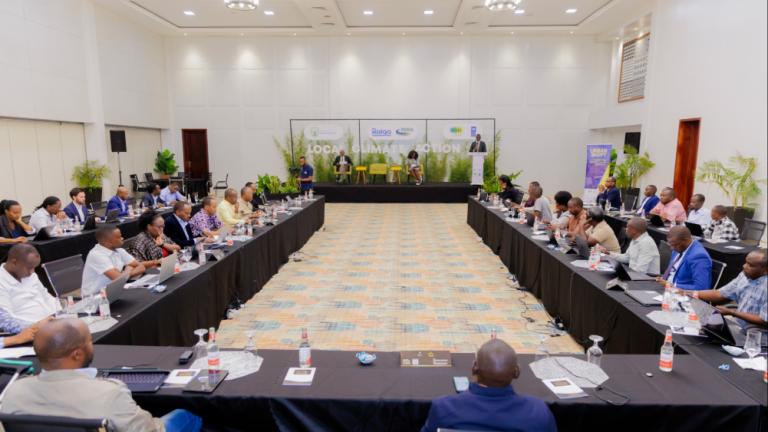Case Study

Laying the Foundations of a Circular Construction Industry
This case study shows how one Finnish city reduced building and construction emissions with innovative circular economy strategies using local materials.
Buildings and construction consume half of the world’s natural resources and about 40% of it's energy. The sector also accounts for a third of global greenhouse gas emissions.
This case study showcases the CircVol project in Turku, Finland, and its innovative circular solution to decrease carbon emissions and other lifecycle impacts of buildings and infrastructure. The clay-based material developed by the project can be used as an alternative for part of the estimated 100 million tons of rock needed for construction across Finland, limiting the extraction of virgin material as well as increasing the use of local materials in place of carbon-intensive imports. This case study was produced by ICLEI.
Learn more

Second National-Local Dialogue for Morocco: From Vision to Local Action, Advancing the Circular Economy
Building on the first National-Local Dialogue, this convening offered an opportunity to deepen discussions around localizing circular economy principles across the country.

First National-Local Dialogue for Morocco
To accelerate the circular economy transition in Morocco, UrbanShift and ICLEI will gather representatives from all of the country's regions to collaborate and discuss shared goals.
Exploring Sustainability in Shenzhen: An Exchange on City-Business Cooperation
Shenzen is a leader in nature-positive, low-carbon development. This UrbanShift Peer-to-Peer Exchange highlighted ideas for how cities across Asia can learn from their innovation.

UrbanShift Looks Back: On the Importance of Facilitating Multi-Level Collaboration
Over the course of the UrbanShift program, ICLEI has led on National-Local Dialogues and other efforts to support enhanced collaboration across levels of government to create more aligned, actionable climate strategies.
